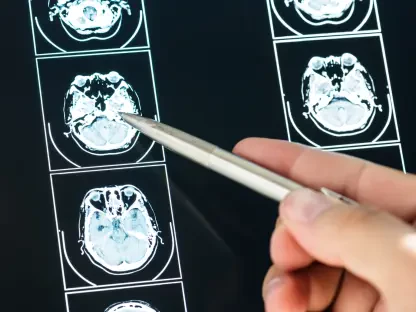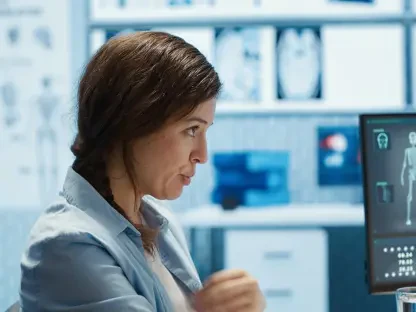In a landmark gathering at the White House, orchestrated by the Centers for Medicare & Medicaid Services (CMS), a powerful coalition of government leaders, healthcare providers, and technology giants convened to chart a new course for health information technology (IT) in the United States. This event, marked by an unprecedented level of collaboration, aimed to forge a patient-centric digital health ecosystem rooted in accessibility, interoperability, and innovation. With over 60 companies, 11 health systems, and seven electronic health record (EHR) providers joining forces alongside industry heavyweights, the stage was set for a transformative dialogue. Under the guidance of Robert F. Kennedy, Jr., head of the Department of Health and Human Services, the initiative zeroed in on dismantling the long-standing barriers that have kept patients from accessing their own health data. The urgency and ambition of this mission underscored a shared commitment to revolutionize healthcare delivery by early 2026, setting a bold precedent for systemic change.
The resonance of Kennedy’s vision—to tear down the digital walls that isolate patients from their information—echoed through every discussion. This wasn’t merely a meeting of minds but a rallying cry to address the deep frustration many Americans feel when navigating a fragmented healthcare system. The event highlighted a collective recognition that the current state of health IT, plagued by siloed data and bureaucratic hurdles, fails to meet modern expectations. Participants from diverse sectors pledged to tackle these issues head-on, focusing on creating a seamless, connected framework that prioritizes individual needs. This collaborative spirit, bridging public and private domains, reflected a profound understanding that meaningful progress requires unity. Beyond lofty ideals, the gathering emphasized actionable strategies, with specific tools and timelines laid out to ensure that promises translate into tangible outcomes. The energy in the room signaled a turning point, one where technology and healthcare could finally align to serve the greater good.
Transforming the Digital Health Landscape
Breaking Down Barriers for Patients
A central pillar of the recent White House event was the unwavering focus on empowering patients by granting them greater control over their health data. Robert F. Kennedy, Jr., articulated a compelling vision of dismantling the digital barriers that have long prevented individuals from accessing critical medical information. For too many Americans, the inability to retrieve or share their health records has been a source of frustration, often leading to delays in care or misinformed decisions. The initiative seeks to flip this dynamic, ensuring that by the first quarter of 2026, patients can interact with their health data as easily as they manage other aspects of their digital lives. This shift is not just about access but about restoring agency, allowing individuals to make informed choices about their treatment and providers. The commitment to this goal, voiced by leaders across sectors, marks a significant departure from past practices where institutional gatekeeping often took precedence over patient needs.
This push for empowerment also addresses the emotional toll of navigating a disjointed system. Imagine a patient with a chronic condition struggling to coordinate care across multiple providers, only to be stymied by incompatible records or restricted access. Such scenarios are all too common, and the event’s emphasis on tearing down these obstacles resonated deeply with attendees. The broader objective is to create a healthcare environment where data flows freely to those who need it most—patients themselves. With over 60 companies and numerous health systems pledging support, there’s a clear consensus that accessibility must be the cornerstone of any modern health IT framework. This isn’t merely a technical fix; it’s a cultural shift toward prioritizing individual rights in healthcare. By aligning efforts around this principle, the initiative aims to rebuild trust between patients and the systems meant to serve them, fostering a more transparent and responsive medical landscape.
Fostering Unity Across Sectors
Collaboration emerged as a driving force at the White House event, with a diverse array of stakeholders uniting to confront systemic flaws in health IT. The gathering brought together government entities like CMS, technology innovators, and healthcare providers, each contributing unique perspectives to a shared mission. This cross-sector partnership is vital, as no single group holds all the answers to the complex challenges facing digital health. The event underscored that meaningful reform hinges on collective action, with participants committing to work hand in hand to create a patient-first system. From policymakers to private industry leaders, there was a palpable sense of purpose in aligning goals and resources. This unity is particularly significant given the historically fragmented nature of healthcare, where competing interests often stall progress. The focus on collaboration signals a readiness to move beyond silos toward a more integrated future.
The momentum generated by this coalition is further amplified by the diversity of expertise at the table. Tech giants bring cutting-edge solutions and scalability, while health systems offer insights into practical implementation and patient needs. Government involvement ensures that policy frameworks support innovation without compromising equity or privacy. Industry voices, such as Seema Verma of Oracle Health, praised the administration for breaking down data “walled gardens,” highlighting how this collaborative environment fosters optimism for real change. The event’s structure, which encouraged dialogue over division, set a powerful precedent for how complex problems can be tackled through partnership. With commitments to shared timelines and outcomes, this unified approach promises to turn ambitious ideas into actionable results. The emphasis on mutual accountability suggests that this alliance is not just symbolic but a genuine engine for transforming healthcare delivery across the nation.
Pioneering Solutions in Health IT
Creating Seamless Data Exchange
One of the most impactful outcomes of the White House event was the introduction of the CMS Interoperability Framework, a strategic blueprint designed to streamline data exchange across the healthcare ecosystem. Interoperability has long been a sticking point in health IT, with disparate systems often unable to communicate effectively, leaving patients and providers caught in the middle. This framework aims to standardize how information is shared between networks, providers, and individuals, ensuring that health data is both accessible and usable. Already, 21 networks have aligned with this initiative as CMS Aligned Networks, demonstrating early buy-in from key players. The voluntary nature of participation fosters inclusivity while maintaining a focus on consistent standards. By addressing these technical hurdles, the framework lays the groundwork for a connected health landscape where information flows without unnecessary friction, ultimately benefiting patient care.
The significance of this interoperability push extends beyond mere data sharing to the broader implications for healthcare quality. When systems can seamlessly integrate, providers gain a more complete picture of a patient’s history, reducing errors and improving decision-making. For patients, it means no longer having to manually transfer records or repeat their medical story at every visit. The involvement of seven EHR companies in supporting this framework highlights the industry’s recognition of its importance. While challenges remain, such as ensuring smaller providers can adopt these standards without undue burden, the event’s focus on scalable solutions offers hope for widespread impact. The timeline targeting early 2026 adds urgency to these efforts, pushing stakeholders to prioritize implementation over prolonged debate. This structured yet flexible approach to interoperability could serve as a model for other sectors grappling with data fragmentation, positioning health IT as a leader in digital transformation.
Driving Progress Through Technology
Innovation was a cornerstone of the discussions at the White House event, with a spotlight on leveraging cutting-edge technology to modernize healthcare interactions. Over 30 companies committed to developing tools that promise to enhance patient experiences and streamline provider workflows. Among the advancements highlighted were secure digital identity systems that allow patients to access their records with ease and AI-driven conversational assistants designed to assist with symptom checking and appointment scheduling. These solutions aim to eliminate outdated inefficiencies, such as paper-based check-in forms, replacing them with user-friendly digital alternatives. The focus on practical, patient-centered technology reflects a broader industry trend toward personalization, ensuring that tools are not just innovative but also accessible to diverse populations. This wave of technological progress holds the potential to redefine how healthcare is delivered and experienced.
The optimism surrounding these innovations was evident in the remarks of industry leaders who see technology as a catalyst for medical breakthroughs. AI, in particular, was heralded for its ability to analyze vast amounts of data, offering insights that can lead to better management of chronic conditions like diabetes and obesity. Digital platforms that facilitate remote monitoring and virtual care were also emphasized as ways to bridge gaps in access, especially for underserved communities. The collaborative energy at the event, with tech firms and healthcare providers aligning on shared goals, suggests that these tools are not distant dreams but imminent realities. The commitment to integrating these technologies within interoperable systems ensures they will function cohesively rather than in isolation. As these advancements roll out, their success will likely hinge on balancing innovation with privacy and equity, ensuring that the benefits of technology reach all corners of society by the targeted milestone in early 2026.
Reflecting on a Milestone for Healthcare
Looking back, the White House event hosted by CMS stood as a defining moment in the push to transform health IT into a system that truly prioritizes patients. The leadership of Robert F. Kennedy, Jr., paired with the dedication of over 60 companies and numerous health systems, created powerful momentum to address long-standing digital barriers. The introduction of the CMS Interoperability Framework and the pledge to roll out innovative tools marked significant strides toward a more connected and efficient healthcare ecosystem. While the ambitious timeline and voluntary participation pose challenges, the collective resolve displayed offers a strong foundation for progress. Moving forward, the focus should remain on sustaining this collaborative spirit, ensuring that smaller providers and vulnerable populations are not left behind in the rush toward innovation. Prioritizing robust support systems and continuous dialogue among stakeholders will be essential to turn these commitments into lasting change.









